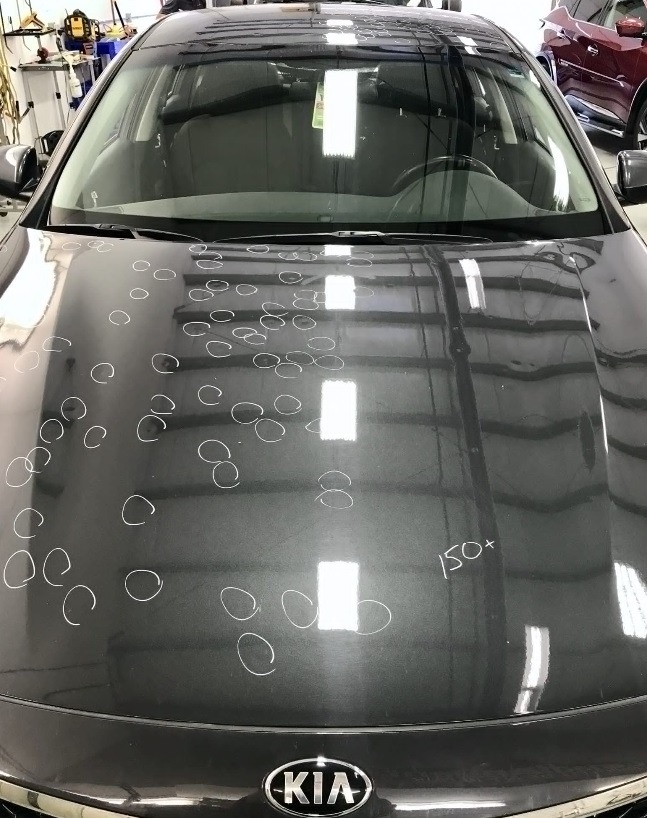Hail causes $1 billion in damage yearly, and thousands of cars need costly repairs. Luckily, there are some steps you can take to protect your car from hail damage.
The best way to prevent hail damage is to park in a covered space, such as a garage at home or a parking garage at work. You can also use an inflatable hail protector that takes just minutes to set up and is remote-controlled.
Park It In A Covered Space
There’s only one sure way to prevent hail damage: park your car in a garage at home. But that’s not always feasible, especially if you work outside the home or run errands during hail-producing storms.
If you cannot park your car in a garage, try to find overhead shelter, such as the roof of a mall parking deck, at a gas station, or below a highway bridge. Although it won’t be faultless, it will lessen the effects. If you’re short on space at home, you can drape moving blankets, quilts, or your floor mats over the car roof, windshield, and hood to help soften the blow of hailstones. Or, a purpose-made hail protection system might fit over your car to lessen the chance of dings and dents. Remember, strong winds can whip away these temporary solutions during a hailstorm. A more permanent solution is a carport, which is a relatively cost-effective option.
Cover It With Blankets or Quilts
Hail can shatter windshields and windows, leaving dents that require costly repair. To help minimize damage, try to find a covered space to park in during a hail storm. Parking garages, malls, and apartment complexes are ideal options. Keeping a few blankets or quilts in your car is also a good idea if you are stranded during a hailstorm.
While it may seem silly, covering your car with blankets or quilts will cushion the impact of hail and reduce the size and amount of dents. Just be sure to secure the blankets so they don’t get blown away by the wind. Duct tape can hold blankets in place well, but the adhesive could peel away car paint if left on too long.
Some people even use their car floor mats as a makeshift hail shield. Just be sure to position the softer, carpeted side on the window and the hard rubberized side against the body of your car.
Stay Away From Windows
Hail is a common cause of expensive car repair, especially for those that live in areas prone to severe thunderstorms. Hail can fracture windshields, sunroofs, and mirrors, leaving dents all over the vehicle.
When the forecast calls for precipitation, parking your automobile in a garage or other covered area is the safest method to prevent hail damage. This will stop the ice balls frequently accompanying strong thunderstorms from hitting your automobile. You should choose a hail damage repair if your car has been damaged by hail. If you cannot find covered parking, try covering your vehicle with blankets or quilts. You can also use floor mats, but be careful as these might blow away in the wind. If you are on the road and it begins to hail, pull over in a safe area and put on your hazard lights. Avoid attempting to escape the storm or accelerating to get ahead since this might make the hail hit your car harder.
Report the Damage to Your Insurance Company
Hail damage can wreak havoc on your car’s appearance and cost you hundreds or even thousands of dollars to repair. That’s why protecting your vehicle from hail damage is important whenever possible. The best way to do that is by parking your car in a covered space, like a garage or awning.
If you’re driving and cannot find a covered space, try to drive under an overpass or bridge as soon as the hail storm starts. However, this poses a serious safety risk because other drivers will do the same, and visibility may become dangerously low.
If you cannot park your vehicle inside during a hailstorm, cover it with blankets or quilts to protect the body of your car from dents and scratches. But be sure to use thick blankets, not thin ones, and duct tape them in place to prevent them from blowing away. You can also try covering your car with floor mats, but remember they’re not foolproof.

